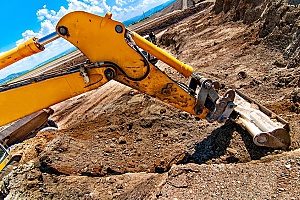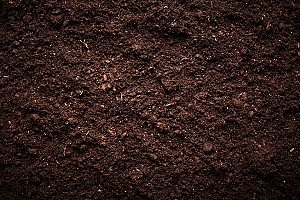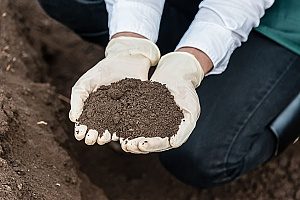 Most people think dirt is just dirt. However, any construction worker or gardener knows that there is a huge difference in the types of dirt and how each type can be used. When utilizing dirt to complete a landscaping project there are two main types of dirt that differ from one another; topsoil and fill dirt.
Most people think dirt is just dirt. However, any construction worker or gardener knows that there is a huge difference in the types of dirt and how each type can be used. When utilizing dirt to complete a landscaping project there are two main types of dirt that differ from one another; topsoil and fill dirt.
Knowing the compositional differences between the two types of dirt can help you make the right decision for which one is best for your project. You may even find that you have to combine the two kinds of dirt together to get your desired result. Once you have decided which type of dirt you need, reach out to a Virginia fill dirt contractor for more information about fill dirt vs topsoil and to schedule your fill dirt or topsoil delivery.
What Is Fill Dirt And How Does It Work?
Fill dirt is most often used to change the grade or elevation of a property to make it more ideal for its intended use. Fill dirt is known as subsoil because it is taken from below the topsoil. Depending on where the dirt is being taken from, this is usually about six inches below the ground. Taking the dirt from this deep is intentional because it does not contain any organic matter. Organic matter breaks down over time, and as it does so, it enriches the dirt with plenty of nutrients to help support plant life. However, this organic matter is what also makes topsoil very unstable. As the organic matter breaks down, the dirt around it begins to shift, which is why topsoil cannot be used for construction purposes.
When determining whether to use fill dirt vs topsoil, keep in mind that fill dirt is mostly used for construction purposes. This can be for land grading, highway maintenance, creating foundations, acting as backfill, etc. It can also be used for landscaping projects that require elevation changes, such as the addition of a swimming pool, the removal of a swimming pool, or the addition of a waterfall.
What Is Topsoil And How Does It Work?
 In Virginia, topsoil is the topmost layer of dirt and is full of nutrients and organic matter that make it ideal for growing plants. Topsoil typically is the first six inches of dirt, however, this can vary depending on where you live. Comparing fill dirt vs topsoil, there are actually many topsoil varieties, and you should choose which soil is right for you based on what you plan to use it for.
In Virginia, topsoil is the topmost layer of dirt and is full of nutrients and organic matter that make it ideal for growing plants. Topsoil typically is the first six inches of dirt, however, this can vary depending on where you live. Comparing fill dirt vs topsoil, there are actually many topsoil varieties, and you should choose which soil is right for you based on what you plan to use it for.
There are seven different types of soil which include clay soil, silty soil, loamy soil, sandy soil, peaty soil, saline soil, and chalky soil. Each of these soils has a different compositional makeup which makes it better for growing certain plants or flowers, and certain soils perform better in some climates than others.
Different Types of Topsoil
Sandy Soil
This soil is light, warm, dry, acidic and low in nutrients. Sandy soil is known as a light soil due to its high proportion of sand and very little clay; clay weighs more than sand so the lack of it makes the soil lighter. This soil is very easy to work with and is known for having quick water drainage. It’s quicker to warm up in the summer, but because of it’s quick drainage, it also tends to get very dry in the summer. Adding organic matter to sandy soil can give it more nutrients and make it better for growing plants.
Clay Soil
This is a much heavier soil than sandy soil and it is much higher in nutrients. It remains wet and cold in the winter and can dry out in the summer. Clay soil is made up of 25% clay, and because there is a lot of space between the clay particles in the soil, the dirt is able to retain a high amount of water.
Silt Soil
This is a light and moisture-retentive soil with a high fertility rate. It’s composed of medium-sized particles that allow for ideal water retention and optimal drainage. The downside to this soil is that it tends to be very fine, so it can be easily washed away by rain.
Peat Soil
This soil is very high in organic matter and is able to retain a lot of water. Peat soil is rarely found in gardens but is more optimized for creating a solid base for planting.
Chalk Soil
This soil can either be light or heavy, but it is always highly alkaline because of the calcium carbonate or lime within its structure. Because this soil is alkaline, it will not support the growth of ericaceous plants that require acidic soils to grow.
Loam Soil
This soil is a mixture of sand, silt, and clay that is combined to avoid the negative effects of each type of dirt. Loam soil is very easy to work with and provides effective water drainage. Loam soil is considered to be the most ideal and universal type of soil to garden with.
How Are They Different?
 Unlike fill dirt which is mostly the same wherever you find it, the process of soil development and formation reflects the weather conditions of the area. Weathering is a term used to describe the means by which soil, rocks, and minerals are changed by chemical and physical processes into other soil components. While fill dirt is pretty standard everywhere, topsoil comes in many different varieties that make it more useful for certain plants over others. Understanding the composition of soil can help you determine which type is more useful for your project, as well as distinguishing between fill dirt vs topsoil and when to use which during your project.
Unlike fill dirt which is mostly the same wherever you find it, the process of soil development and formation reflects the weather conditions of the area. Weathering is a term used to describe the means by which soil, rocks, and minerals are changed by chemical and physical processes into other soil components. While fill dirt is pretty standard everywhere, topsoil comes in many different varieties that make it more useful for certain plants over others. Understanding the composition of soil can help you determine which type is more useful for your project, as well as distinguishing between fill dirt vs topsoil and when to use which during your project.
The five factors of soil formation are the parent material, climate, living organisms, topography, and time. Wherever these five factors are the same, the soil will be the same. However, if one differs slightly then the soil will differ. There are six main types of soil which are clay, sandy, silty, peaty, chalky, and loamy. Each has a unique makeup which makes them more practical in some areas than others. For example, if you live in an extremely dry area you need to select a soil that can support plants in dryer climates.
Topsoil can be used for more than just making a garden. It can also be used for repairing lawn damage, improving rain drainage, and for fertilizing dirt. For more information about fill dirt vs topsoil, reach out to a Virginia fill dirt contractor and schedule a fill dirt or topsoil delivery.








































